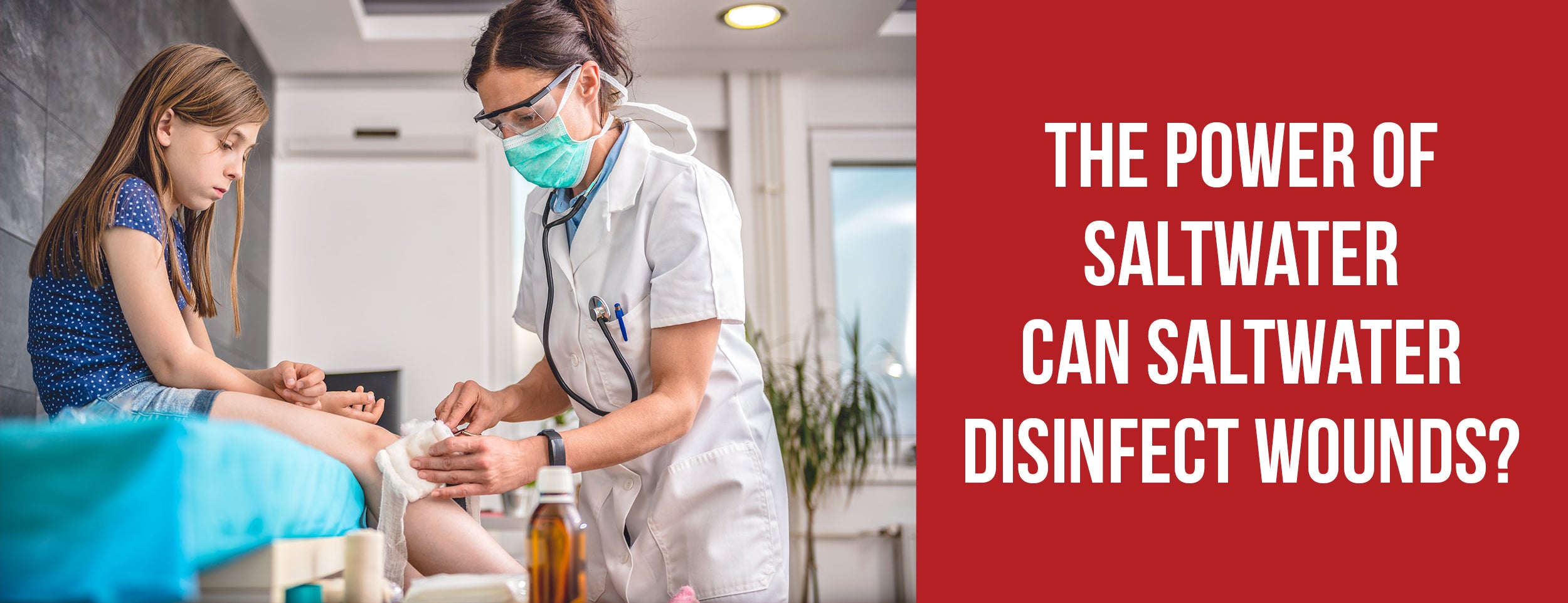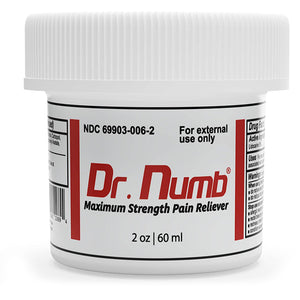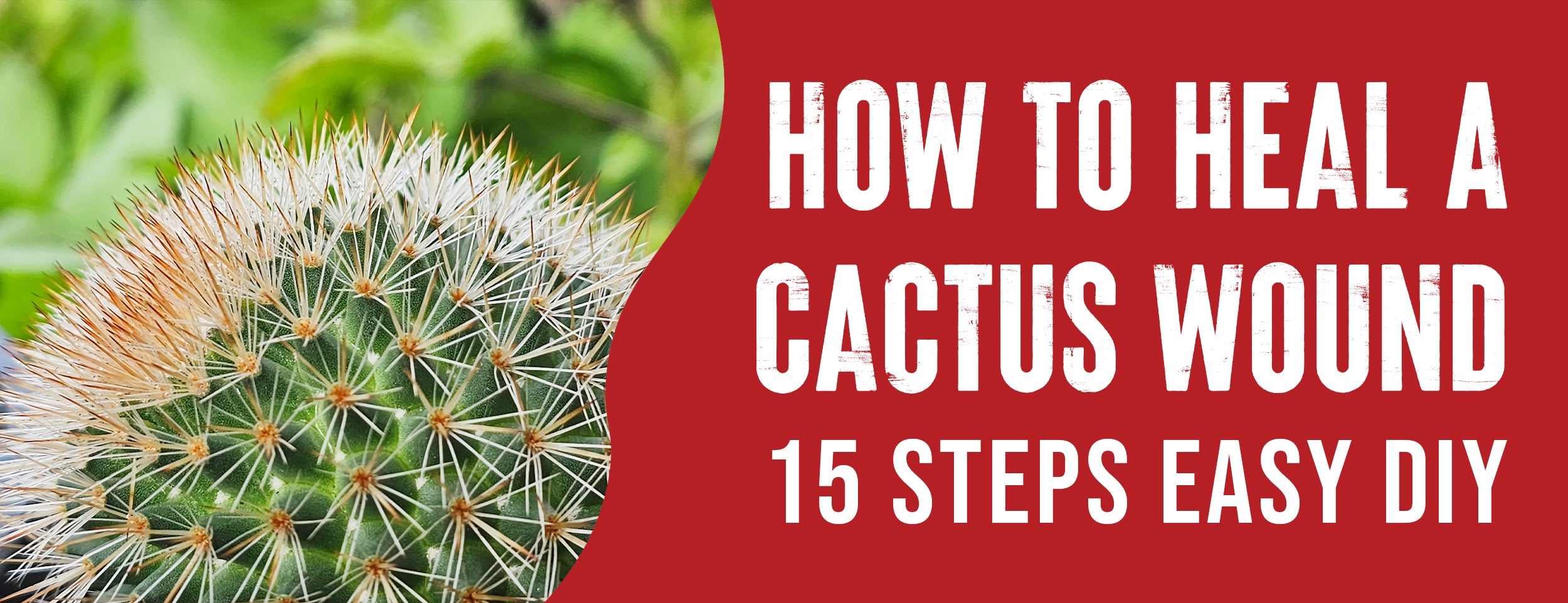Salt, a widely used ingredient in households, has served various purposes throughout history. It has been used for food preservation, seasoning, and wound care.
When salt (sodium chloride) encounters liquid in cells, it causes the liquid to dissipate from the body. This process also expels bacteria if present in these fluids, aiding in skin cleansing.
Saltwater has been employed since ancient times to treat cuts, wounds, sores, and skin irritations.
The efficacy and safety of using salt to disinfect wounds have been scrutinized. In this article, we will delve into the truth, separating fact from fiction, behind using salt as a means of wound disinfection.
Can Salt Disinfect Wounds: Debunking the Myth

The belief that salt can disinfect wounds and prevent infection is widely spread. This belief is based on the idea that salt creates a hostile environment for bacteria, dehydrating and disrupting their cellular functions. But what does scientific research tell us?
Mixed and Inconclusive Results:
Scientific research on salt and wound care has shown mixed and inconclusive results. While some studies suggest that salt may have antibacterial properties against certain types of bacteria, such as Staphylococcus aureus and Pseudomonas aeruginosa, others have found no significant effect on bacterial growth or survival. It's important to consider these findings when evaluating the effectiveness of salt for wound care.
Potential Harmful Effects:
In addition to the lack of solid scientific evidence supporting salt as a wound disinfectant, some studies indicate that salt may impair wound healing. It can cause inflammation, tissue damage, and pain, hindering healing. This is an important consideration when deciding on wound care methods.
Limited Benefits and Considerations:
While salt may have some limited benefits for wound care, it is essential to understand its limitations. Solid scientific evidence does not support the myth that salt can disinfect wounds. Regarding wound care, it's important to consider other factors and consult medical professionals for the most effective and safe treatments.
The Science Behind Salt and Wound Disinfection
Wound disinfection is reducing or eliminating microorganisms that can cause infection or delay healing in a wound. Methods of wound disinfection include mechanical debridement, irrigation, antiseptics, antibiotics, and dressings.

The Power of Salt as an Antiseptic:
- Salt is a type of antiseptic that can kill or inhibit microorganisms.
- It interferes with bacteria's metabolism, membrane integrity, or DNA synthesis.
- Sodium chloride (NaCl) in salt affects bacteria differently.
The Impact of Salt on Bacteria
Salt significantly impacts bacteria, affecting their osmotic pressure, membrane potential, and ion balance. This disruption can impair vital cellular functions and viability, although certain bacteria have adapted mechanisms to tolerate high salt concentrations.
Osmotic Pressure:
- Salt creates an osmotic pressure gradient between bacteria and their environment.
- This causes water to move out of the bacterial cell, shrinking and impairing its function and viability.
Disruption of Membrane Potential and Ion Balance:
- Salt disrupts the membrane potential and the ion balance of bacteria.
- This hampers essential cellular functions like nutrient transport, enzyme activity, and energy production.
Not All Bacteria are Equally Affected:
- Some bacteria have developed mechanisms to handle high salt concentrations.
- These include producing compatible solutes, modifying cell wall composition, or pumping excess sodium ions.
- As a result, salt may not be effective against all types of bacteria that can infect wounds.
Pros and Cons of Using Salt for Wound Disinfection

Salt possesses certain antibacterial properties against specific types of bacteria but has numerous limitations and considerations. Let's explore the pros and cons of utilizing salt for wound disinfection.
Advantages:
- Salt is affordable, easily accessible, and user-friendly.
- In certain cases, salt may aid in reducing inflammation and swelling.
- By establishing an osmotic gradient, salt can aid in removing dead tissue and debris from wounds.
- Salt can enhance blood flow and oxygen supply to wounds by increasing vascular permeability.
Disadvantages:
- Some individuals may experience pain, irritation, a burning sensation, or allergic reactions when salt is used.
- Salt can cause dehydration or osmotic shock, potentially damaging healthy tissues and cells.
- Delayed epithelialization, granulation, or collagen synthesis can impede wound healing when salt is applied.
- Salt may not effectively combat the kinds of bacteria that lead to wound infections.
- Salt may interfere with other wound healing products like dressings, ointments, or antibiotics.
Acknowledging that employing salt for wound disinfection presents advantages and disadvantages is essential. It should not be used as the sole or primary method of wound care but rather as a supplementary or alternative option in specific situations.
Exploring Epsom Salt’s Role in Wound Disinfection
Is Epsom salt truly effective in disinfecting wounds and promoting healing? Let's delve into the scientific evidence and expert opinions on this widely debated topic.

The Composition of Epsom Salt
Magnesium Sulfate vs. Sodium Chloride:
- Epsom salt is not your ordinary table salt; it is composed of magnesium sulfate (MgSO4), not sodium chloride (NaCl).
- Known for its diverse uses in caring for our bodies and gardens and even as a laxative, Epsom salt has gained attention for its potential wound disinfection properties.
The Claimed Benefits of Epsom Salt:
Antiseptic, Anti-inflammatory, and Wound Healing Agent:
- Advocates argue that magnesium sulfate, found in Epsom salt, can act as an antiseptic, an anti-inflammatory, and aid in wound healing.
- Scientific evidence and expert opinion are scarce and conflicting, leaving us with more questions than answers.
The Antibacterial Effects of Magnesium Sulfate
Mixed Research Findings:
- Some studies suggest magnesium sulfate is antibacterial against certain bacteria like Staphylococcus aureus and Escherichia coli.
- Contradicting these findings, other studies indicate that magnesium sulfate has no significant impact on bacterial growth or survival.
- Interestingly, some studies suggest magnesium sulfate may hinder wound healing by causing tissue necrosis, edema, or fibrosis.
The Verdict
Lack of Solid Scientific Evidence:
- Unfortunately, insufficient solid scientific evidence supports the claim that Epsom salt can effectively disinfect wounds.
- While Epsom salt may offer some wound care benefits, it has several limitations and considerations.
It is crucial to cautiously approach Epsom salt in wound disinfection and consult medical professionals for personalized advice.
The Power of Saltwater: Can Saltwater Disinfect Wounds?

Follow these essential steps to ensure optimal wound healing while utilizing salt as a disinfectant.
The effectiveness of salt water for wound disinfection depends on several factors:
- Concentration of salt.
- Source of water.
- Type of wound.
- Frequency of application.
Benefits of salt water for wound care:
- Helps remove dirt, debris, and dead tissue.
- Reduces risk of infection and promotes healing.
- Reduces inflammation and swelling in some cases.
Drawbacks of saltwater for wound care:
- Can cause pain, irritation, burning sensation, or allergic reaction.
- Can damage healthy tissue and cells.
- Can delay wound healing processes.
Risks of saltwater for wound care:
- Contamination with harmful microorganisms or chemicals.
- Interference with other wound care products or treatments.
Using saltwater for wound care:
- Method shouldn't be solely used.
- Should be used as a complementary or alternative option in certain situations.
Enhancing Safety when Using Salt on Wounds.
Ensure Sterility:
- Prioritize cleanliness and sterility of all materials used on wounds, including salt, water, containers, utensils, gauze, cotton balls, tweezers, and scissors.
- This prevents contamination and infection.
Appropriate Concentration and Amount:
- Avoid using excessive or insufficient amounts of salt on wounds.
- Excessive salt can damage healthy tissue, while insufficient salt may not have the desired osmotic pressure or antibacterial effect.
- The recommended concentration is 0.9% or 9 grams (1 1/2 teaspoons) of salt per liter (4 cups) of water.
Optimal Water Temperature:
- Use warm water instead of cold or hot water on wounds.
- Cold water can reduce blood flow, while hot water can increase bleeding and inflammation.
- Warm water helps dissolve salt, soothe pain, and improve circulation in wounds.
Gentle Application:
- Do not rub, scrub, or squeeze wounds with salt or saltwater.
- Apply salt or saltwater gently using dabbing, spraying, or soaking techniques.
- This prevents further damage and pain to the wound.
Thoroughly Rinse and Dry:
- After using salt or saltwater on wounds, clean them with clear water to remove salt and debris.
- Dry the wound well with a clean towel or gauze to prevent moisture and infection.
Select Suitable Dressing:
- Depending on the wound type and severity, apply a dressing to protect it from dirt, bacteria, and further injury.
- Dressings also aid in absorbing drainage, maintaining moisture, and promoting healing.
- Suitable dressings include bandages, gauze, pads, films, foams, hydrogels, alginates, and hydrocolloids.
Regular Dressing Changes:
- Avoid leaving the same dressing on the wound for extended periods.
- Regularly change the dressing according to professional instructions, at least once daily or whenever it becomes wet, dirty, or loose.
Monitor Closely:
- Keep a vigilant eye on the wound for signs of improvement or deterioration.
- Signs of improvement include reduced pain, swelling, redness, drainage, odor, and wound size.
- Signs of deterioration include increased swelling, redness, drainage, and odor, as well as fever, chills, pus, streaks, or darkening of the wound.

Seek Professional Medical Help:
- Salt or saltwater should not be solely relied upon for wound disinfection.
- For serious or complicated wounds, such as deep cuts, large burns, puncture wounds, animal bites, or chronic ulcers, seek professional medical help promptly.
- Additionally, if signs of infection or complications arise, such as pus, fever, chills, or discoloration of the wound, seek professional medical assistance without delay.
Conclusion
In conclusion, using salt in wounds has pros and cons. While salt may possess antibacterial properties against certain bacteria and aid in removing dirt and debris, it can also cause pain, irritation, and tissue damage.
It can reduce inflammation but may hinder wound healing and impact other treatments. Therefore, salt should not be used as a sole treatment for wounds but as a complement in specific situations.
Caution, safety measures, and evaluation are necessary. Salt is not a magic bullet but a natural remedy with benefits and drawbacks. Balance and informed decisions are key.

![Does Salt Disinfect Wounds: 9 Tips [Based on Safety]](http://drnumb.com/cdn/shop/articles/Does_Salt_Disinfect_Wounds__9_Tips_Based_on_Safety.jpg?v=1711450163&width=1100)










![7 Tips To Disinfect Stab Wounds [5 Complications]](http://drnumb.com/cdn/shop/articles/How_To_Disinfect_Stab_Wound__7_DIY_Steps_5_Complications.jpg?v=1715140726)

